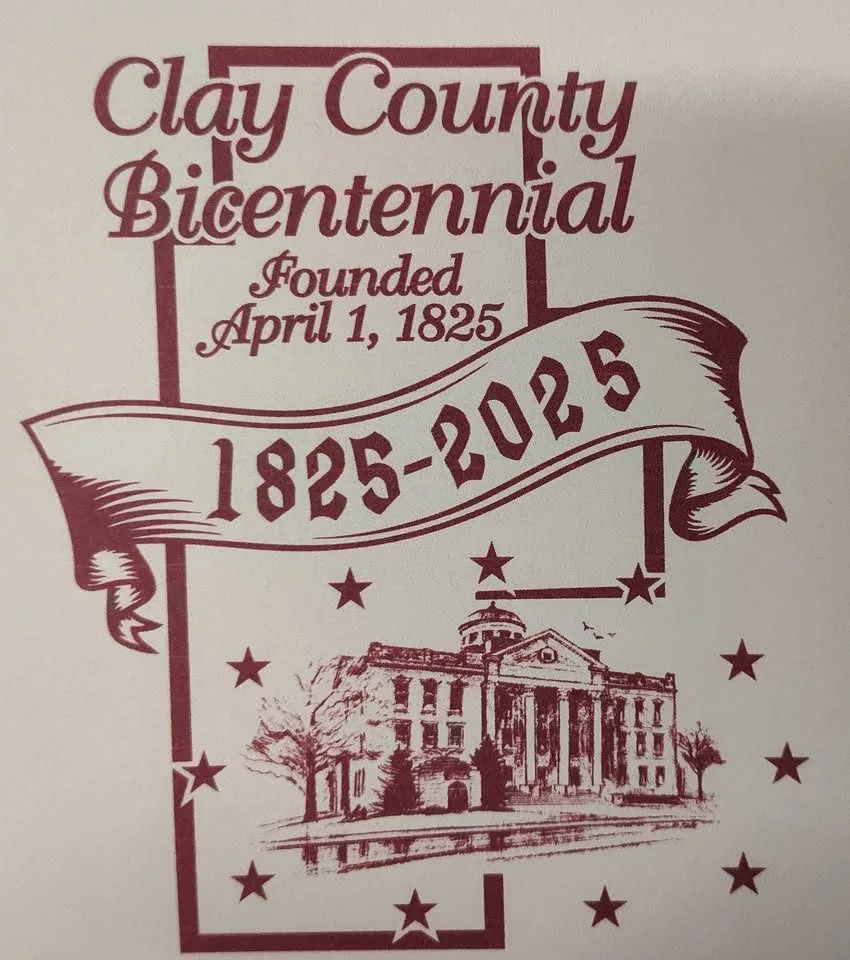April 1st, 2025 marked 200 years for Clay County. This year 92.7 The Rock will be speaking with Clay County Historian Jeff Koehler, community members, elected officials, and local business owners discussing and celebrating the history in Clay County while also celebrating the Clay County Bicentennial.
In this episode we sat down with Jeff Koehler, Clay County Historian, at the Clay County Historical Society at the end of March to get the history of Clay County; starting with the formation of Clay County and moving forward from there. We also discussed the impact of transportation and industry in Clay County. Click play to listen to the full interview and read below for additional information and quotes that go along with the interview.
This series will span all of 2025 and if you would like to be interviewed, please email Jade Scott (jade@jkomediagroup.com).
------
According to the Clay County Interim Report, “The county’s earliest settlement preceded its formation by almost a decade. David Thomas came to the area in 1818 and was followed soon after by Samuel Rizley. The majority of Clay County’s settlement activity centered along the Eel River which flows through the central part of the County.”
“When we established the county, April 1, 1825, they made Bowling Green the county seat, because that was the largest settlement in Clay County,” said Koehler. The county’s first courthouse was completed in 1827 in Bowling Green. That courthouse was replaced by a brick courthouse in 1836 but was destroyed in 1851.
In the year 1877 the county seat of Clay County was set in Brazil.
“Well, you know, that's a big story… almost immediately after Bowling Green got the county seat, there were groups trying to move it,” Koehler said. “At that early time there was a big push for a more central location in the county, because Bowling Green is in Washington Township, the southeastern border portion of the county.”
Koehler discussed how the population of Clay County, according to the US Census, increased significantly through the 1850’s and didn’t stop increasing until 1900.
Historical Population
1830: 1,616
1840: 5,567
1850: 7,944
1860: 12,161
1870: 19,084
1880: 25,854
1890: 30,536
1900: 34,285
1910: 32,535
1920: 29,447
1930: 26,479
1940: 25,365
1950: 23,918
1960: 24,207
1970: 23,933
1980: 24,862
1990: 24,705
2000: 26,556
2010: 26,890
2020: 26,466
That significant growth can be attributed to the growth of industry in the area as well as new transportation routes. While the then slow and drop in population can be linked to industries utilizing technology. This meant technology could replace certain jobs.
Throughout all of Clay County’s history, agriculture has always been there. “Even during the Coal Mine era, there were farmers that in the wintertime they would work in the coal mines.”
During the late 1870’s are farmers were ‘afforded better access to regionals markets and advances in farming techniques boosted agricultural production. The routing of railroad lines through the county gave rise to a number of small market towns which provided a shipping point for the area’s agricultural good,’ the Clay County Interim Report stated.


